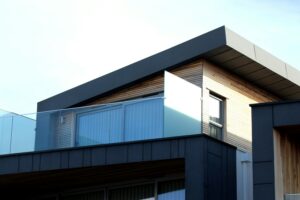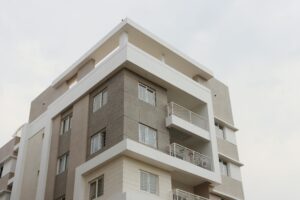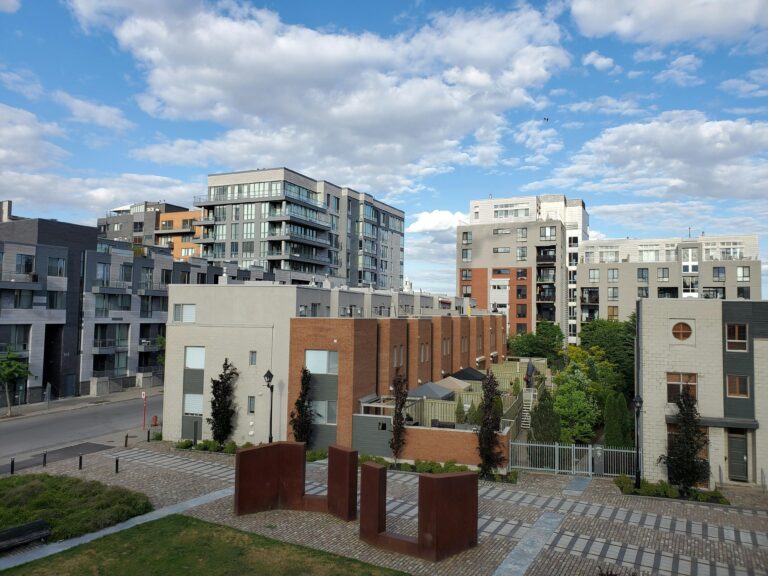Why Regular Flat Roof Inspections Are Crucial for Homeowners
Flat roofs are popular for their modern style and low cost. However, they need regular inspections. This helps prevent water pooling, leaks, and structural damage. Routine checks help catch issues early, saving homeowners from expensive repairs. A study in the Journal of Building Engineering found that regular maintenance and inspections can extend the life of flat roofs by 50%. Neglected roofs don’t benefit from this care. Preventive inspections also lower the risk of water damage. This damage is a major cause of structural issues in flat roof systems (Construction and Building Materials Journal).


Protect Your Investment! Schedule a Free Flat Roof Inspection Today!
What is the Most Common Defect in a Flat Roof?
The most common defect in flat roofs is water pooling due to inadequate drainage. This can lead to leaks and structural damage if left untreated. Other issues include blistering, cracks, and punctures caused by weather and foot traffic. Regular flat roof inspections in Denver catch problems early. This prevents costly repairs and helps the roof last longer. A study of 801 roof damage cases showed that water ponding caused most flat roof failures. This highlights the need for good drainage systems (Journal of Building Pathology).
Top Signs of Wear and Tear on Flat Roofs
Flat roofs are exposed to harsh weather conditions, UV rays, and debris, leading to natural wear and tear. Key signs to watch for include:
- Cracked or blistered roofing materials are easy for homeowners to spot during regular checks.
- Dark patches or discoloration show water damage. These signs are often easy to spot, especially after it rains.
- Sagging areas or uneven surfaces: If sagging is obvious, it’s clear. However small dips may need a professional to check for structural problems.
- Mold or algae growth: Homeowners can see surface mold or algae. However, mold hidden in roofing layers usually requires a professional to find it.
Regular inspections help homeowners spot these signs early. This ensures timely maintenance and keeps roofs durable for the long term. Some problems, like hidden structural damage or internal mold, might not be easy to see. They need a professional evaluation for an accurate diagnosis and solutions.
How to Spot Water Damage and Leaks on a Flat Roof
Water damage is one of the most severe threats to flat roofs. Watch for:
- Water stains on ceilings and walls.
- Musty odors indicate mold growth.
- Peeling paint or wallpaper.
- Damp patches or puddles on the roof’s surface.
Addressing these symptoms promptly can prevent structural damage and costly repairs.


Stop Water Damage in Its Tracks—Book a Leak Inspection Today!
Identifying and Preventing Roof Punctures and Cracks
Flat roofs are susceptible to punctures and cracks due to factors such as foot traffic, fallen branches, and sharp debris. These breaches can lead to water infiltration, resulting in leaks and insulation damage. To mitigate these issues:
- Install walk pads to reduce foot traffic impact. Studies show that walkways lower mechanical stress on roofing materials. This helps prevent punctures and can extend the roof’s lifespan.
- Regularly clear away debris to prevent damage. Accumulated debris holds moisture, which can harm materials and make them more prone to punctures. Routine cleaning is essential to maintain the roof’s integrity.
- Check for fallen branches or hail damage after storms. Post-storm assessments are key. Severe weather can bring sharp debris and harm the roof’s surface. Timely inspections allow for the early detection and repair of potential damage.
Regular maintenance and expert inspections are key. They help spot and fix punctures before they damage the roof’s strength. Hiring qualified roofing specialists helps catch potential problems early. They also put in place the right preventive measures.
The Role of Proper Drainage in Flat Roof Health
Good drainage systems are essential for flat roofs. They stop water from pooling. Pooling can cause leaks and damage to the structure. Ensure the following:
- Gutters and downspouts are clear of debris.
- The drains are functional and positioned correctly.
- The slope is adequate to guide water to drainage points.
Ignoring drainage problems can reduce a flat roof’s lifespan and raise repair costs.
Common Roofing Materials and How They Impact Inspection
Flat roofs are typically constructed with one of the following materials:
- Modified Bitumen: Durable and weather-resistant but prone to cracking under extreme temperatures.
- EPDM (Ethylene Propylene Diene Monomer): It’s flexible and resists UV rays. However, it can be punctured easily.
- TPO (Thermoplastic Olefin): Energy-efficient and resistant to mold, but vulnerable to seam failure.
- Built-Up Roofing (BUR) has multiple layers for better protection. However, it is heavy and needs strong structural support.
Understanding the roofing material helps to tailor the inspection process and maintenance approach.
DIY vs. Professional Flat Roof Inspection: What You Need to Know
DIY inspections help homeowners find clear problems. However, professional inspections provide a thorough evaluation. Experts know how to spot small issues, such as hidden leaks, weak structures, and early wear signs. Additionally, they use specialized tools like infrared cameras for moisture detection.
Avoid Costly Mistakes—Get a Comprehensive Flat Roof Assessment!
Conclusion
Regular flat roof inspections are key. They help spot problems early, so you can fix them before they turn into expensive repairs. Homeowners can keep their roofs strong and lasting longer by knowing common defects, signs of wear, and the need for proper drainage. For a thorough and professional assessment, trust Peak Builders & Roofers of Denver to keep your flat roof in top condition.
Protect your investment and enjoy peace of mind—Schedule your flat roof inspection today!
FAQ Section
How often should I have my flat roof inspected?
At least twice a year, preferably in spring and autumn, and after major weather events. Regular inspections catch small problems before they become expensive repairs. This keeps your roof in good shape.
What are the most common causes of leaks in flat roofs?
Water pooling, punctures from debris, and deteriorated roofing materials are the primary culprits. Addressing these issues promptly can prevent water damage and extend the roof’s lifespan.
Can I inspect my flat roof myself, or do I need a professional?
Homeowners can do basic checks, but a professional inspection provides a complete evaluation. It also helps catch hidden problems early. Professional inspectors use specialized tools and expertise to identify potential problems accurately.
What steps can I take to increase the longevity of my flat roof?
Regular maintenance, quick repairs, and good drainage can really extend your roof’s life. Additionally, scheduling professional inspections helps detect hidden issues before they become major problems.
What should I do if I find a crack or puncture on my flat roof?
Temporary patching can stop more damage, but you should get a professional to inspect and repair it for a lasting fix. Ignoring cracks can lead to leaks and costly structural damage over time.
Are flat roof repairs covered by homeowners’ insurance?
Your coverage varies based on your policy and the reason for the damage. Consult your insurance provider for coverage details. Keeping detailed records of maintenance and inspections can help support your insurance claims.

